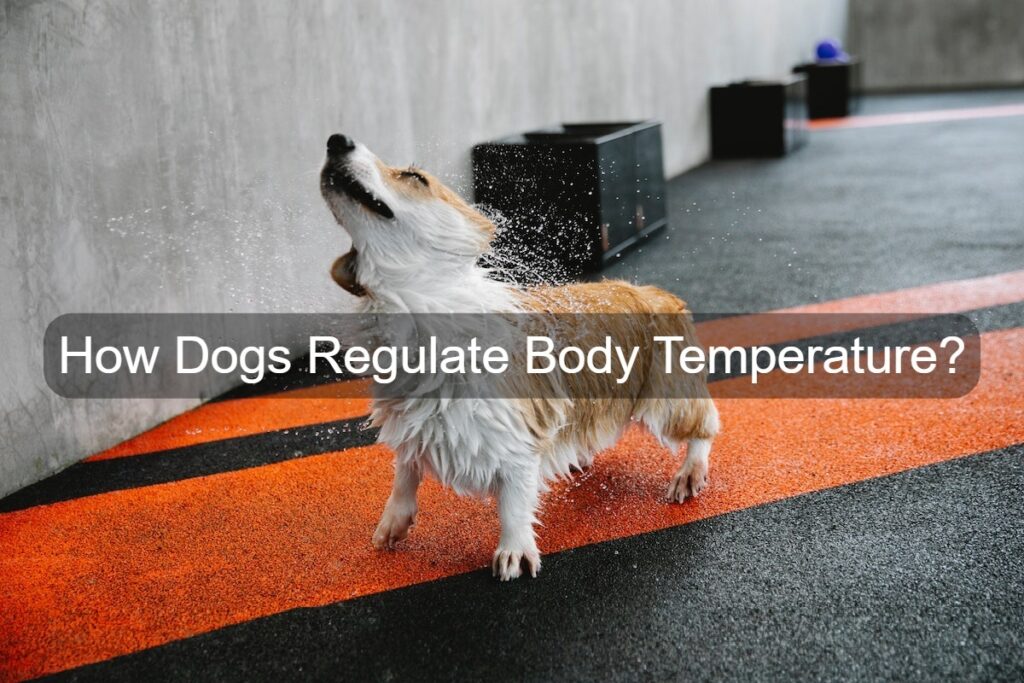Have you ever wondered how dogs stay cool in the blazing sun or warm in the cold? Our four-legged friends, like us, need a consistent body temperature to stay healthy and comfortable.
But how can dogs keep their bodies’ temperature stable? It’s a fascinating process including an array of creative adaptations and behaviors. In this post, we’ll look at the amazing ways dogs keep their internal thermometer in check, ensuring they’re always prepared for whatever weather comes their way.
So, let’s delve into the science behind your dog body temperature regulation!
How Dogs Regulate Body Temperature
Dogs, unlike humans, have a very limited ability to sweat through their skin to cool off. This leads to the question – do dogs sweat? They only have sweat glands in their nostrils and paw pads, which only play a minimal role in dog body temperature regulation. Dogs, on the other hand, rely on their respiratory system to keep their body temperature stable, according to experts from CanDogsEatAI.
Panting is one of the most well-known ways that dogs control their body temperature. Panting helps to drain moisture from the dog’s tongue and respiratory tract, which cools the blood flowing in those areas. As a result, the dog’s body temperature drops overall.
Dogs’ fur is another method they control their body temperature. Depending on the thickness and kind of coat, their fur provides some protection from the cold and heat. Some breeds have a double coat with a dense undercoat and a longer outer coat.
The undercoat traps warm air near the skin, while the outer coat repels water and grime. The double coat also allows dogs to shed or grow more hair depending on the season, which aids in temperature adaptation.
Dogs regulate their body temperature through behavior as well. When it’s hot, they’ll seek out shade or cool surfaces, and when it’s chilly, they’ll curl up and cuddle together. They can also modify their activity level and dietary intake based on the weather.
For example, in cold weather, dogs may burn more calories to stay warm, whereas in warmer weather, they may lower their hunger and exercise.
Factors That Affect Dogs’ Body Temperature Regulation
While dogs have some natural mechanisms to regulate their body temperature, they also face some challenges and limitations. Different factors can affect a dog’s tolerance and response to temperature changes. Some of these factors include:
- Breed: Some dog breeds are more suited to certain temperatures than others. Northern breeds such as Siberian Huskies, Samoyeds, and Alaskan Malamutes, for example, thrive in cold weather, whereas short-haired species such as Greyhounds, Whippets, and Chihuahuas prefer milder climates. Brachycephalic breeds, such as Bulldogs, Pugs, and Boston Terriers, have difficulty breathing in hot weather due to their short noses and narrow airways.
- Age: Older dogs have lower body temperatures than younger pups and are less tolerant of cold weather. They may also be suffering from medical diseases that impair their capacity to regulate body temperature, such as arthritis, hypothyroidism, or Cushing’s disease. Puppies are also more susceptible to cold temperatures than adult dogs due to lower body fat and less established thermoregulation.
- Weight: Fat insulates, so too much or too little alters the body’s ability to shed or retain warmth. Overweight dogs may overheat more easily in hot weather, while underweight dogs may lose heat more quickly in cold weather.
- Coat type: A dog’s coat thickness plays an important role in providing heat or cooling. Dogs with thin coats may not be able to produce much heat under cold circumstances, while dogs with thick coats may overheat more easily under hot circumstances. Dogs with thick coats may overheat more easily under hot circumstances, so it’s important to know how to cool down a dog?
- Health: Poor health, particularly heart or thyroid disease, can affect a dog’s tolerance to temperature changes. Some medications or treatments may also affect a dog’s ability to regulate body temperature. For example, steroids can increase a dog’s susceptibility to heatstroke, while chemotherapy can make a dog more prone to hypothermia.
How Dogs Regulate Their Body Temperature Through Other Mechanisms
Besides their coat and panting, dogs have other mechanisms to regulate their body temperature. Some of these mechanisms are:
- Vasodilation: This is the widening of blood vessels near the skin surface that allows more blood flow and heat transfer to the environment.
- Vasoconstriction: This is the narrowing of blood vessels near the skin surface that reduces blood flow and heat loss to the environment.
- Sweating: Dogs have sweat glands on their paw pads and noses that secrete a watery fluid that helps cool them down by evaporation.
- Shivering: Dogs shiver when they are cold to generate heat by contracting their muscles.
- Seeking shade or shelter: Dogs seek shade or shelter when they are hot or cold to reduce their exposure to the sun or the wind.
- Seeking water or snow: Dogs seek water or snow when they are hot or cold to cool down or warm up by conduction.
- Curling up or spreading out: Dogs curl up or spread out when they are cold or hot to conserve or release heat by changing their body surface area.
How to Help Your Dog Stay Comfortable in Different Weather Conditions
As caring pet owners, we always want to ensure that our dogs are comfortable and healthy, regardless of the weather conditions. However, different climates pose unique challenges that require adaptation and extra care in our pet care routines. Here are some tips on how to help your dog stay comfortable in different weather conditions:
- Cold weather: In cold weather, keeping your dog warm is essential. You can invest in dog sweaters, jackets, or booties for added warmth, especially for breeds prone to the cold. Make sure any clothing fits well and doesn’t restrict movement. You can also provide your dog with a warm bed or blanket indoors, and a well-insulated shelter outdoors.
Always ensure your dog has access to unfrozen water and enough food to maintain their energy level. Avoid walking your dog during the coldest parts of the day or on icy surfaces. Always clean your dog’s paws after walks to remove snow, ice, and harmful chemicals. If the temperature is too low, consider moving exercise indoors or shortening the walk.
- Hot weather: In hot weather, keeping your dog cool is critical. Always ensure your dog has access to shade and plenty of fresh water. Consider using fans, air conditioning, cooling mats, or doggie pools to help your dog stay comfortable. You can also make or buy some frozen treats for your dog to enjoy. Avoid walking your dog during the hottest parts of the day or on hot surfaces.
Choose cooler times of the day, such as early morning or late evening, for outdoor activities. Watch out for signs of heatstroke, such as excessive panting, drooling, weakness, or collapse. If you suspect your dog has heatstroke, move them to a cool place, apply cool water to their body, and contact your veterinarian immediately. Never leave your dog in a parked car in hot weather, as this can be fatal.
- Wet weather: Wet weather can also pose some challenges for dogs. Rain, snow, or humidity can affect your dog’s coat, skin, and mood. To keep your dog comfortable in wet weather, you can follow these tips:
-
- Proper grooming: Keeping your dog’s coat clean and dry is important to prevent matting, tangling, or skin infections. You can use a towel or a hairdryer to dry your dog after walks or baths. You can also use a waterproof coat or a raincoat to protect your dog from getting wet. Brush your dog regularly to remove any dirt or debris from their coat.
-
- Indoor playtime: Wet weather can limit your dog’s outdoor activities and make them bored or restless. To keep your dog entertained and stimulated indoors, you can play games with them, such as fetch, tug-of-war, or hide-and-seek. You can also provide them with toys, puzzles, or chews to keep them busy and happy.
-
- Paw care: Wet weather can also affect your dog’s paw pads, making them more prone to cracking, bleeding, or infection. To protect your dog’s paws from wet weather, you can use booties or a protective wax. You can also trim the hair between their toes to prevent ice or mud from sticking. Always check and clean your dog’s paws after walks to remove any foreign objects or irritants.
Final Thoughts on Dog Body Temperature
Dogs regulate their body temperature through various mechanisms, such as their coat, panting, sweating, shivering, and seeking shade or water. However, dogs can still overheat in hot weather and suffer from heatstroke, which can be fatal if not treated promptly.
Therefore, you should help your dog stay cool and comfortable in hot weather by providing them with enough water and shade, avoiding high temperatures and excessive exercise, using cooling products and grooming tools, and monitoring their health.
By following these tips, you can ensure that your dog enjoys the summer without any risks.





